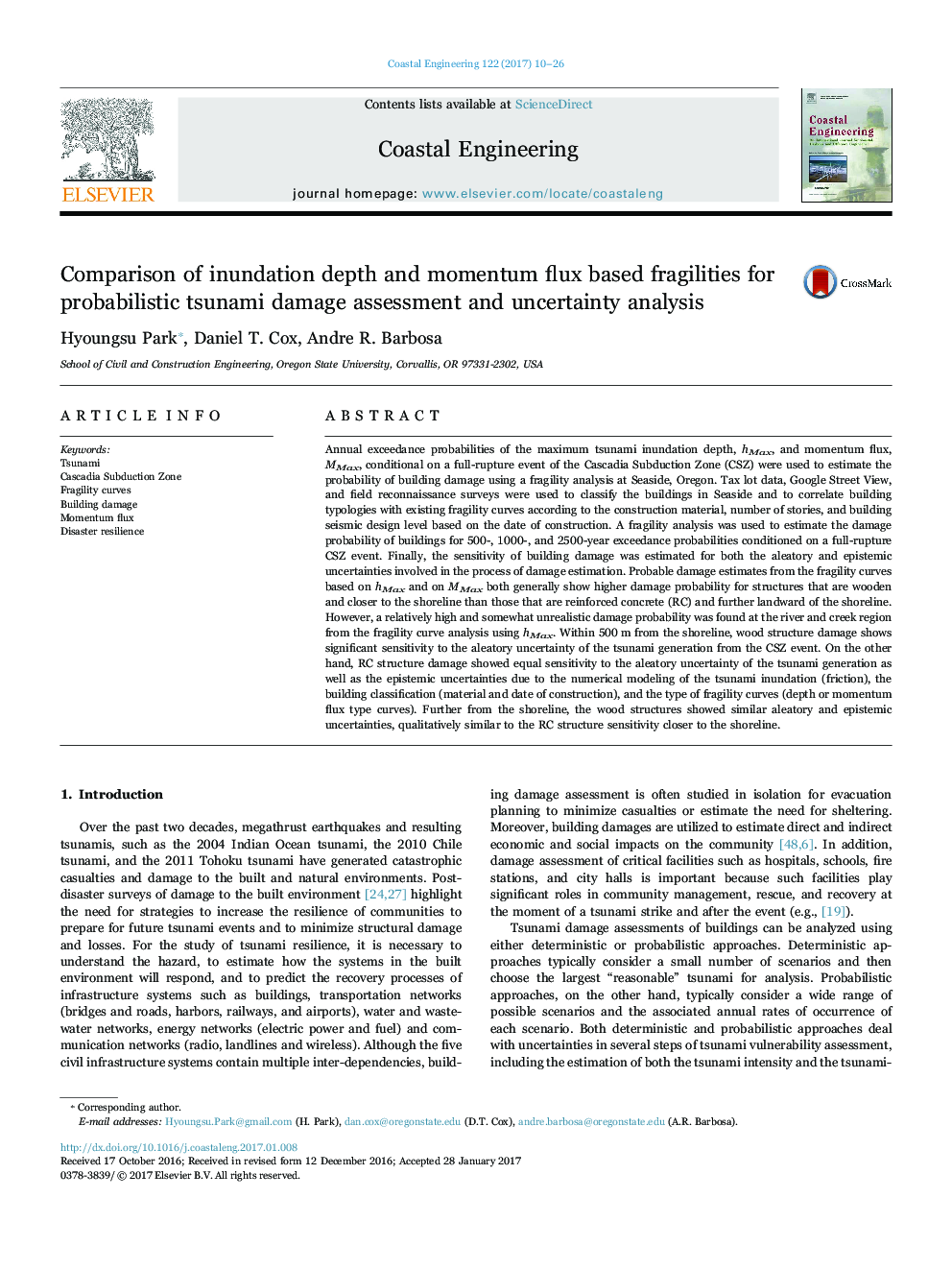| Article ID | Journal | Published Year | Pages | File Type |
|---|---|---|---|---|
| 5473355 | Coastal Engineering | 2017 | 17 Pages |
Abstract
Annual exceedance probabilities of the maximum tsunami inundation depth, hMax, and momentum flux, MMax, conditional on a full-rupture event of the Cascadia Subduction Zone (CSZ) were used to estimate the probability of building damage using a fragility analysis at Seaside, Oregon. Tax lot data, Google Street View, and field reconnaissance surveys were used to classify the buildings in Seaside and to correlate building typologies with existing fragility curves according to the construction material, number of stories, and building seismic design level based on the date of construction. A fragility analysis was used to estimate the damage probability of buildings for 500-, 1000-, and 2500-year exceedance probabilities conditioned on a full-rupture CSZ event. Finally, the sensitivity of building damage was estimated for both the aleatory and epistemic uncertainties involved in the process of damage estimation. Probable damage estimates from the fragility curves based on hMax and on MMax both generally show higher damage probability for structures that are wooden and closer to the shoreline than those that are reinforced concrete (RC) and further landward of the shoreline. However, a relatively high and somewhat unrealistic damage probability was found at the river and creek region from the fragility curve analysis using hMax. Within 500Â m from the shoreline, wood structure damage shows significant sensitivity to the aleatory uncertainty of the tsunami generation from the CSZ event. On the other hand, RC structure damage showed equal sensitivity to the aleatory uncertainty of the tsunami generation as well as the epistemic uncertainties due to the numerical modeling of the tsunami inundation (friction), the building classification (material and date of construction), and the type of fragility curves (depth or momentum flux type curves). Further from the shoreline, the wood structures showed similar aleatory and epistemic uncertainties, qualitatively similar to the RC structure sensitivity closer to the shoreline.
Keywords
Related Topics
Physical Sciences and Engineering
Engineering
Ocean Engineering
Authors
Hyoungsu Park, Daniel T. Cox, Andre R. Barbosa,
